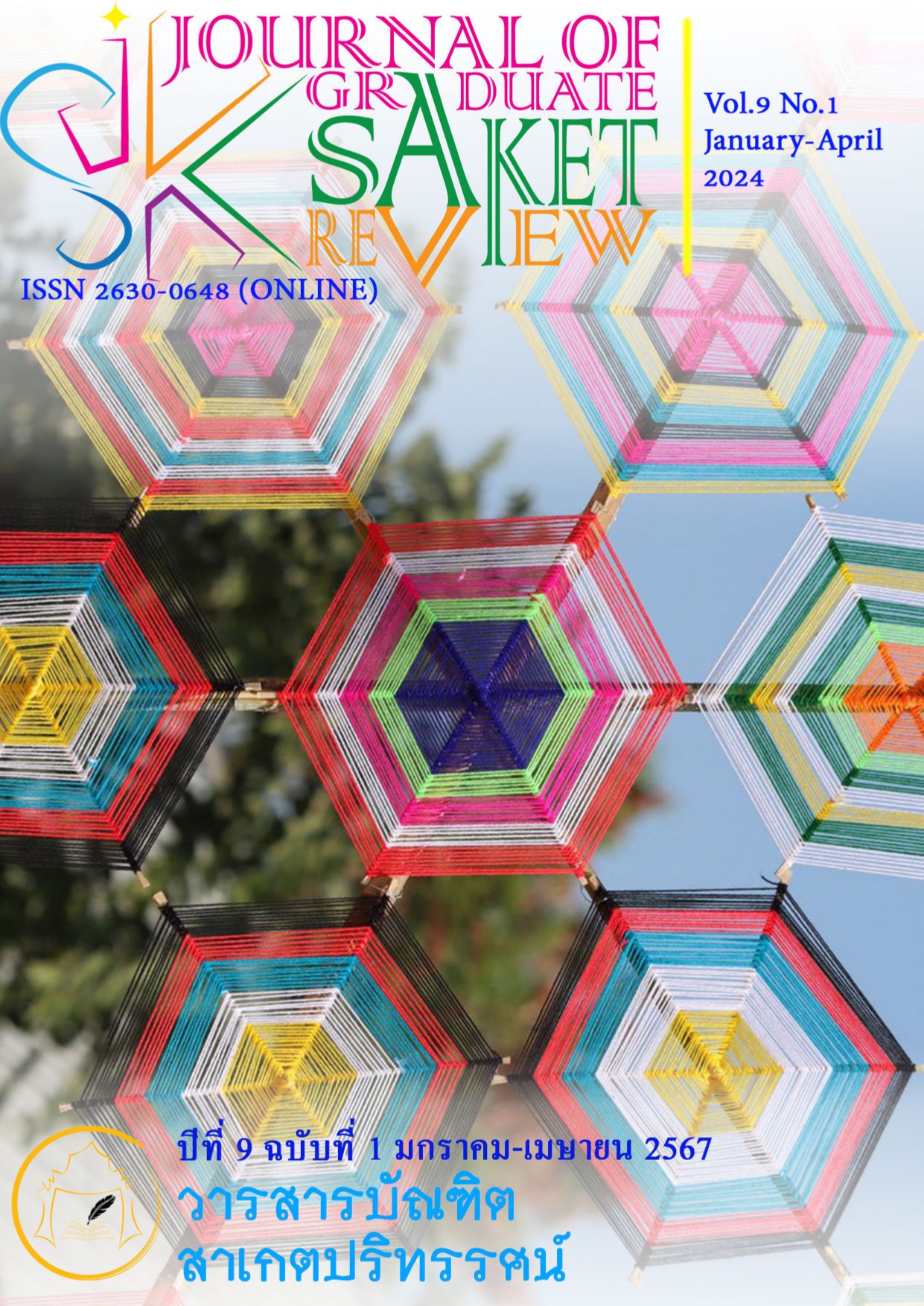คติความเชื่อเรื่องพญานาคในพระพุทธศาสนา
Main Article Content
บทคัดย่อ
พญานาคเป็นกำเนิดประเภทเดรัจฉาน แต่มีความพิเศษเพราะเป็นอมนุษย์ สามารถจำแลงกายเป็นมนุษย์ได้ มี 4 ตระกูล ได้แก่ วิรูปักษ์ เอราปถะ ฉัพยาบุตร และกัณหาโคตมกะ อาศัยอยู่ตามแหล่งน้ำ บ่อน้ำ ป่าไม้และต้นไม้ จอมปลวก ภูเขา และภพนาคหรือสวรรค์ชั้นจาตุมมหาราชิกานั่นเอง กรรมที่ทำให้เกิดเป็นพญานาคมีทั้งกุศลกรรมและอกุศลกรรม ความแตกต่างคือกุศลกรรมทำให้ได้เกิดเป็นนาคราช มีทิพยสมบัติคล้ายเทวดา บทบาทของนาคที่ปรากฏในคัมภีร์พระพุทธศาสนา ได้แก่ การปกป้องช่วยเหลือคนทำความดี การบำเพ็ญความดี เป็นผู้มีความเห็นผิด ดุร้าย ทำร้ายผู้อื่น และเป็นอุปกรณ์การแสดงของหมองูขณะรักษาอุโบสถศีล อิทธิพลความเชื่อเรื่องพญานาคในพระพุทธศาสนาต่อสังคมไทย ได้แก่ ประเพณีการบวช ประเพณีการฮดสรง ศิลปะ การท่องเที่ยว และการบันดาลโชคลาภ
Article Details

อนุญาตภายใต้เงื่อนไข Creative Commons Attribution-NonCommercial-NoDerivatives 4.0 International License.
เนื้อหาและข้อมูลในบทความที่ลงตีพิมพ์ในวารสารบัณฑิตสาเกตปริทรรศน์ ถือเป็นข้อคิดเห็นและความรับผิดชอบของผู้เขียนบทความโดยตรงซึ่งกองบรรณาธิการวารสาร ไม่จำเป็นต้องเห็นด้วย หรือร่วมรับผิดชอบใด ๆบทความ ข้อมูล เนื้อหา รูปภาพ ฯลฯ ที่ได้รับการตีพิมพ์ในวารสารบัณฑิตสาเกตปริทรรศน์ ถือเป็นลิขสิทธิ์ของวารสารบัณฑิตสาเกตปริทรรศน์ หากบุคคลหรือหน่วยงานใดต้องการนำทั้งหมดหรือส่วนหนึ่งส่วนใดไปเผยแพร่ต่อหรือเพื่อกระทำการใด ๆ จะต้องได้รับอนุญาตเป็นลายลักอักษรจากวารสารบัณฑิตสาเกตปริทรรศน์ ก่อนเท่านั้น
เอกสารอ้างอิง
กลุ่มจารีตประเพณี สำนักวรรณกรรมและประวัติศาสตร์. (2565).“นาค” ในวัฒนธรรมไทย. เอกสารประกอบการสัมมนา. กรุงเทพมหานคร: กลุ่มจารีตประเพณี สำนักวรรณกรรมและประวัติศาสตร์.
ชาญชัย เพียรคงธรรม และคณะ. (2561). นาคสถาน ในภาคอีสานของไทย. อุบลราชธานี: คณะศิลปศาสตร์ และกองส่งเสริมการวิจัย บริการวิชาการ และทำนุบำรุงศิลปวัฒนธรรม มหาวิทยาลัยอุบลราชธานี.
พระวินัย ธรรมะวง และคณะ. (2564). ศึกษาวิเคราะห์ความเชื่อเรื่องพญานาคในการประกอบพิธีกรรมของประชาชนนครหลวงเวียงจันทน์สาธารณรัฐประชาธิปไตยประชาชนลาว. Journal of Modern Learning Development. 6(4), (กรกฎาคม-สิงหาคม 2564): 67-89.
พระปลัดพจน์ทพล ฐานสมฺปุณฺโณ (ยุบลเลิศ). (2563). ศึกษาวิเคราะห์ความเชื่อและพิธีกรรมเรื่องพญานาคในพระพุทธศาสนา เถรวาทที่มีความสัมพันธ์กับองค์พระธาตุพนม. วิทยานิพนธ์พุทธศาสตรมหาบัณฑิต สาขาวิชาพระพุทธศาสนา. บัณฑิตวิทยาลัย: มหาวิทยาลัยมหาจุฬาลงกรณราชวิทยาลัย.
มหาจุฬาลงกรณราชวิทยาลัย. (2539). พระไตรปิฎกฉบับภาษาไทย ฉบับมหาจุฬาลงกรณราชวิทยาลัย. กรุงเทพมหานคร: โรงพิมพ์มหาจุฬาลงกรณราชวิทยาลัย.
________. (2556). พระไตรปิฎกและอรรถกถาแปล ฉบับมหามกุฏราชวิทยาลัย. พิมพ์ครั้งที่ 8. กรุงเทพมหานคร: มหามกุฏราชวิทยาลัย.
org. 84000 พระธรรมขันธ์. สืบค้นเมื่อ 23 ตุลาคม 2566, จาก https://84000.org/tipitaka /attha/attha.php?b=25&i= 24&p=3)


